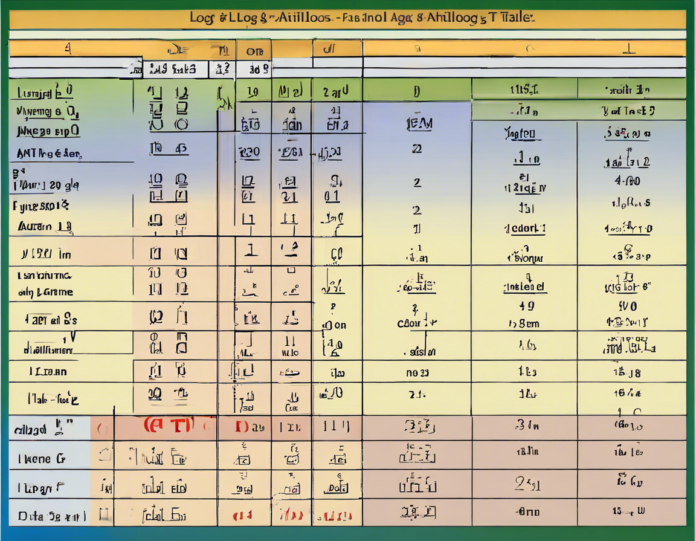Have you ever found yourself struggling with complex calculations that involve logarithms and antilogarithms? Do you often wish you had a handy tool to simplify these mathematical operations and save you valuable time and effort? Look no further! In this comprehensive guide, we will delve deep into the world of log and antilog tables, equipping you with the knowledge and resources you need to master these mathematical tools effectively.
Understanding Logarithms:
Logarithms are mathematical functions that represent the exponent to which a base must be raised to produce a given number. They provide a convenient way to simplify calculations, especially when dealing with large numbers or exponential equations. The logarithm of a number x to the base b is denoted as log_b(x).
Properties of Logarithms:
- Product Rule: log_b(x * y) = log_b(x) + log_b(y)
- Quotient Rule: log_b(x / y) = log_b(x) – log_b(y)
- Power Rule: log_b(x^a) = a * log_b(x)
- Change of Base Formula: log_b(x) = log_c(x) / log_c(b)
The Log Table:
A log table is a valuable resource that provides a comprehensive list of logarithmic values for different numbers and bases. By using a log table, you can quickly look up the logarithm of a given number without having to perform complex calculations manually. This can significantly expedite your problem-solving process and enhance the accuracy of your results.
Understanding Antilogarithms:
On the flip side, antilogarithms represent the inverse operation of logarithms. They allow you to find the actual numerical value corresponding to a given logarithmic expression. The antilogarithm of a number y to the base b is denoted as antilog_b(y).
Properties of Antilogarithms:
- Antilogarithm Definition: antilog_b(y) = b^y
- Inverse Operation: antilog_b(log_b(x)) = x
The Antilog Table:
Similar to log tables, antilog tables provide a convenient reference for determining antilogarithmic values quickly and accurately. By utilizing an antilog table, you can effortlessly find the numerical equivalents of logarithmic expressions, simplifying your calculations and minimizing errors.
Practical Applications of Log and Antilog Tables:
Log and antilog tables find extensive applications across various fields, including mathematics, engineering, physics, and finance. They are particularly valuable in scenarios involving exponential growth, decay, signal processing, and data analysis. By leveraging log and antilog tables effectively, you can streamline your calculations, solve complex problems efficiently, and gain a deeper understanding of logarithmic concepts.
Common Uses of Logarithms and Antilogarithms:
- Population Growth Modeling
- Signal Intensity Calculations
- Interest Rate Computation
- Decibel Measurements
- Chemical Concentration Determination
FAQs (Frequently Asked Questions):
Q1: What is the purpose of using a log table?
A: A log table simplifies the process of finding logarithmic values for different numbers and bases, aiding in faster and more accurate calculations.
Q2: How do I read values from a log table?
A: To find the logarithm of a number, locate the corresponding row for the base and column for the number in the log table.
Q3: Why are antilog tables useful?
A: Antilog tables help in determining the numerical values associated with logarithmic expressions, facilitating quick and precise calculations.
Q4: Can log and antilog tables be used in scientific research?
A: Yes, log and antilog tables are commonly employed in scientific research for data analysis, modeling, and experimental calculations.
Q5: How accurate are log and antilog tables compared to electronic calculators?
A: While electronic calculators provide instant results, log and antilog tables are reliable tools for manual computations and serve as valuable learning aids in understanding logarithmic concepts.
In conclusion, mastering log and antilog tables is a valuable skill that can greatly enhance your mathematical proficiency and problem-solving capabilities. By familiarizing yourself with these essential tools, you can tackle complex calculations with confidence and precision, making your academic or professional journey smoother and more rewarding. Embrace the power of logarithms and antilogarithms, and elevate your mathematical prowess to new heights!

